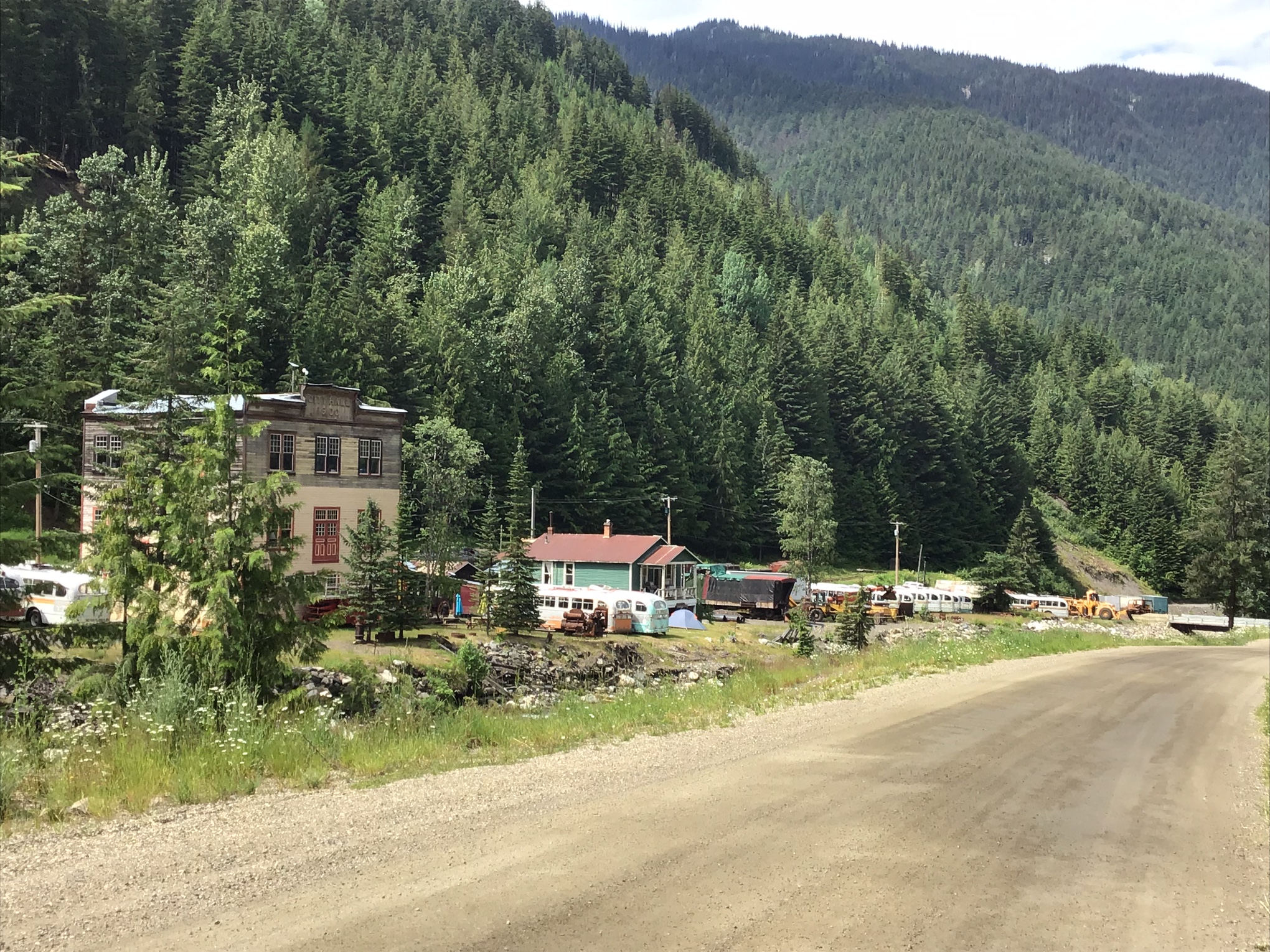
Thought I’d take a break from my summer break to write up this post about Sandon, a super interesting town in the Kootenays. We dropped by there last week on our way to Nelson because I’d heard it was a ghost town and a graveyard for Vancouver’s Brill Trolley buses. We arrived there via a 10 km dirt road that runs off Highway 31A between New Denver and Kaslo.
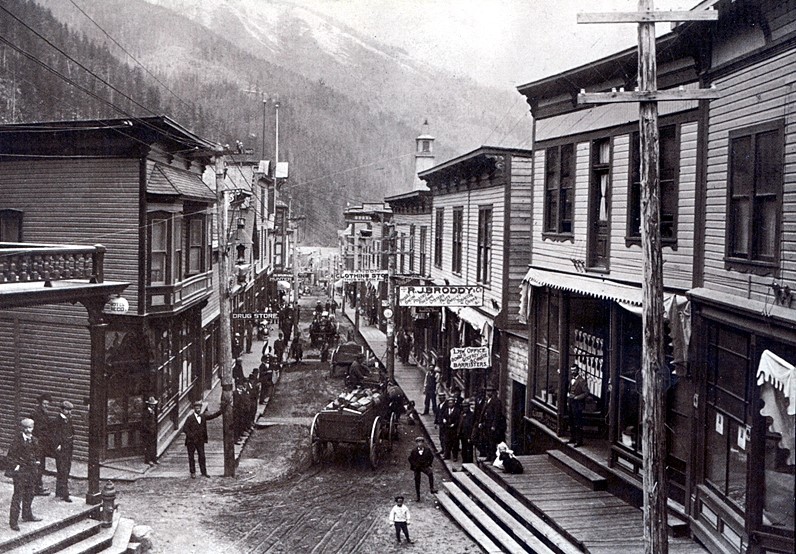
Ghost Town:
Sandon is much more than a ghost town and its history is staggering. A century and a couple of decades ago, the Slocan silver rush brought people from all over Canada, California, Colorado, Oregon and Idaho. By the late 1890s, Sandon had 29 pubs, banks, three churches, a major redlight district, a soft drink factory, three breweries, a cigar manufacturer, three sawmills, two newspapers, a bowling alley, a bookstore and an opera house. It also had the most advanced electric light system in North America.
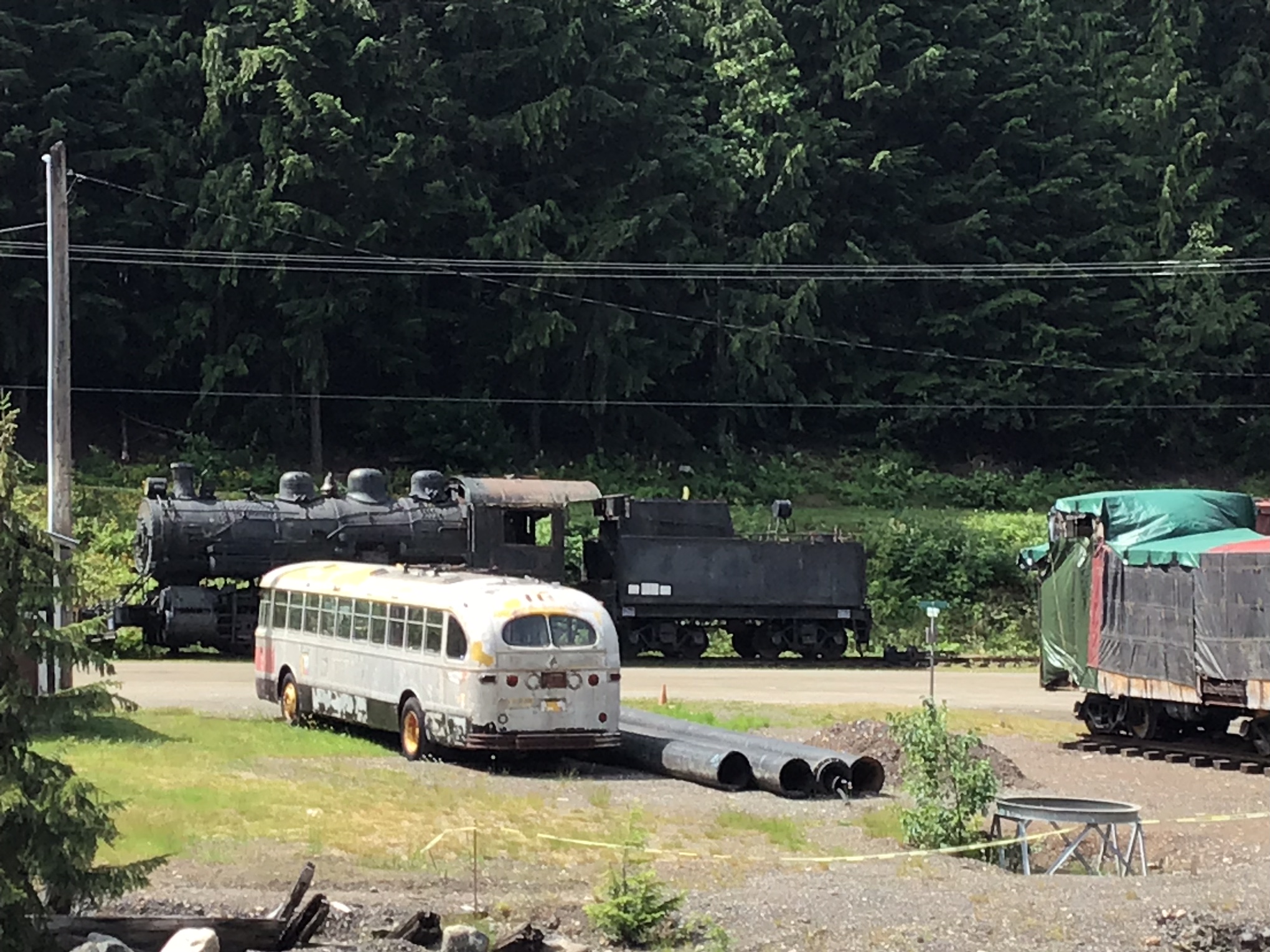
Hal Wright:
We crossed the little bridge over the creek and bumped into Hal Wright who was walking up the road schlepping a ladder. Lucky for us because Hal owns most of the town. He is also an authority on the history of the place—his family settled there in the booming 1890s, and he has lived there since 1972 when he co-founded the Sandon Museum with the help of a government grant at age 16.
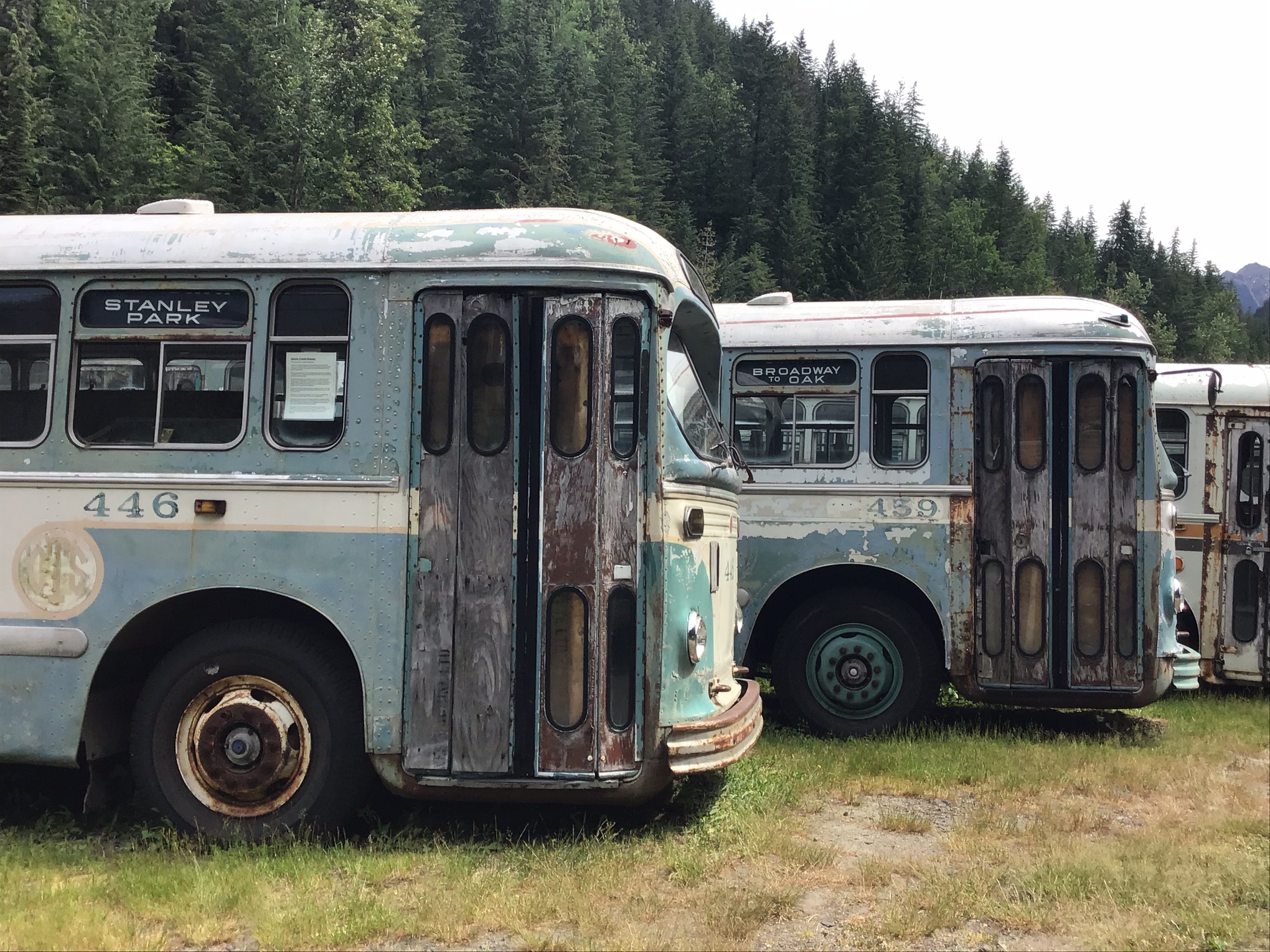
As well as owning a chunk of Sandon land, the 1900 City hall and a steam train, Hal also owns the power station. In 2001, he rescued 13 Brills from the scrapyard, and used his long-haul trucking company to bring them up to Sandon for restoration. The goal, he says, is to put them back into service, probably in Vancouver since that’s the only city in Canada left that still runs electric buses.
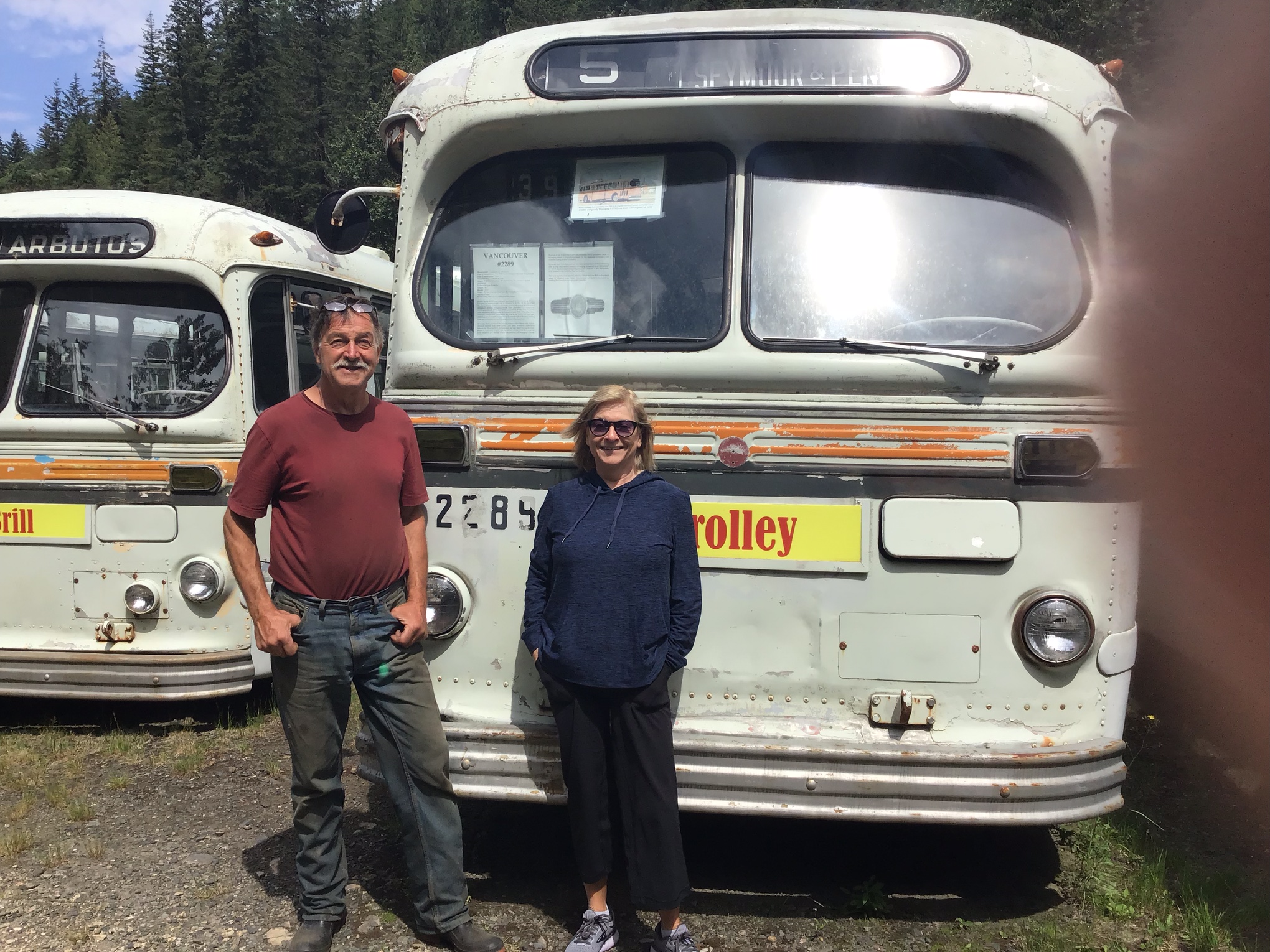
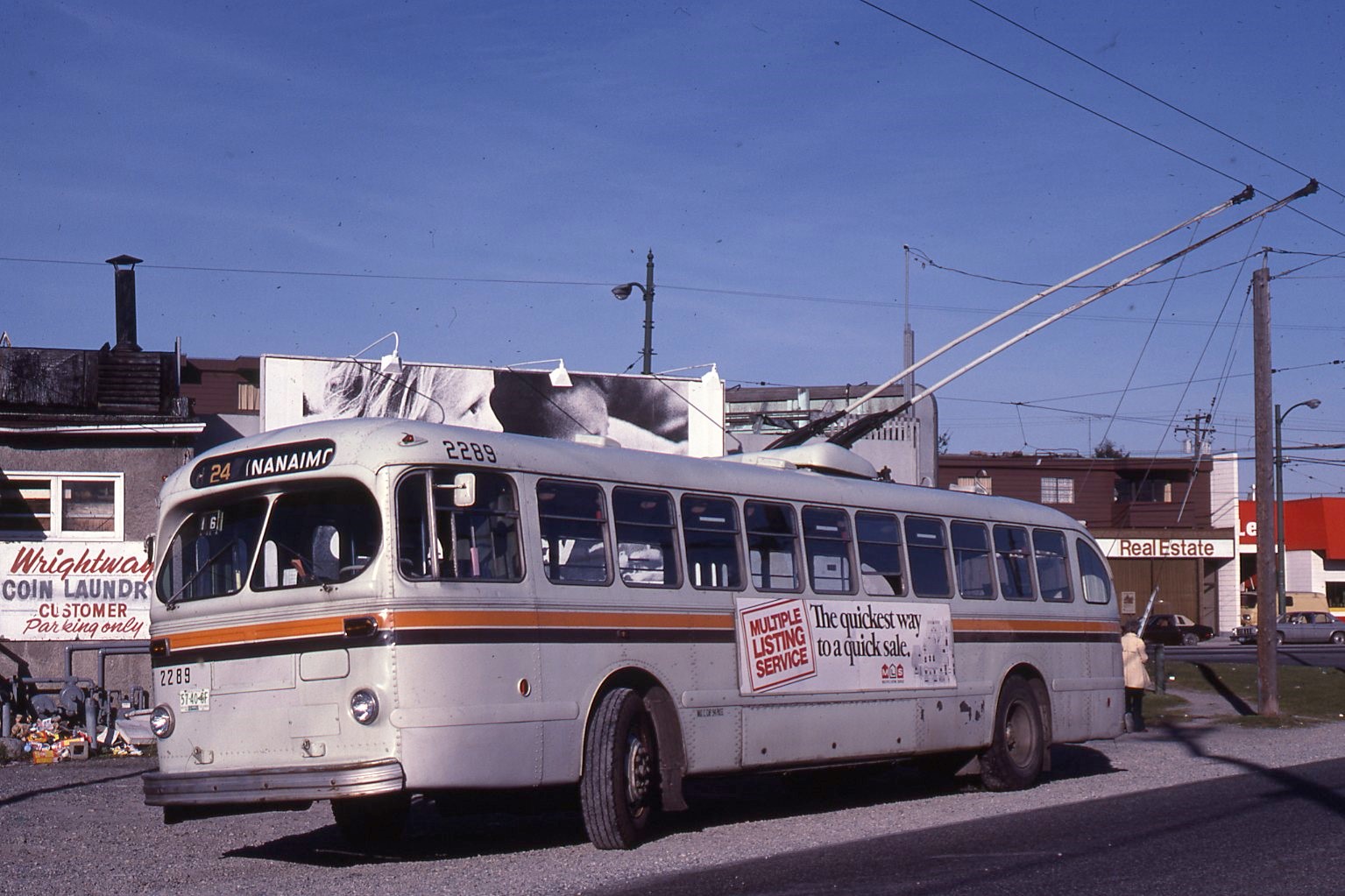
Japanese Internment:
Over the years, Sandon has been besieged by avalanches, floods and fires. In 1900, a fire destroyed most of the business section of the town. Silver prices tanked and mines folded after WW1. Then when things looked bleakest and population declined to around 100 in 1942, Sandon became an internment camp for close to 1,000 Japanese/Canadians. They fixed up abandoned buildings and revived the town. After they left in 1945 the population dropped to 30. Ten years later a flood finished off the lower part of Sandon. Today the population is five.
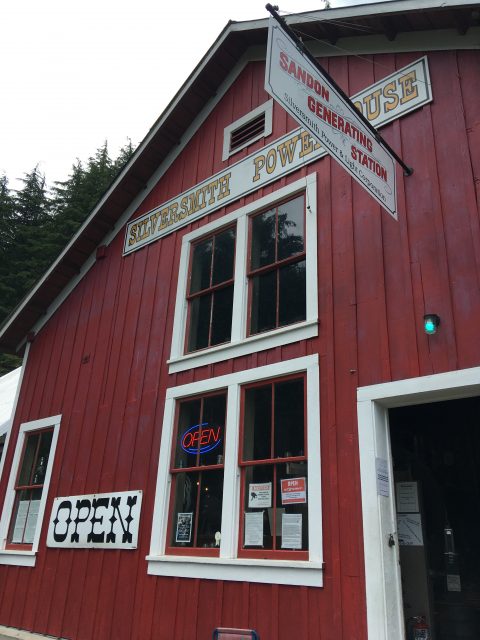
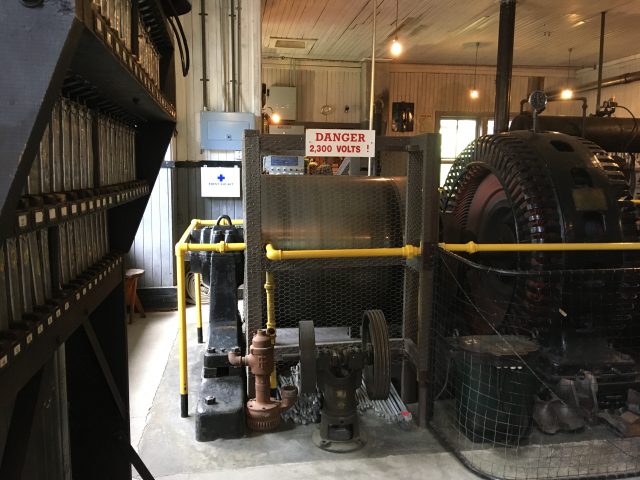
Sandon has a museum, a gift shop and a food truck also owned by Hal, which sees more than 60,000 visitors every year. We saw more tourists in Sandon then we did wandering around many other fully functioning small towns. And, a mine is once again operating in the area. Apparently galena (made up of 20% silver, 60% lead and 20% zinc) is making a come back, and so it seems is Sandon.
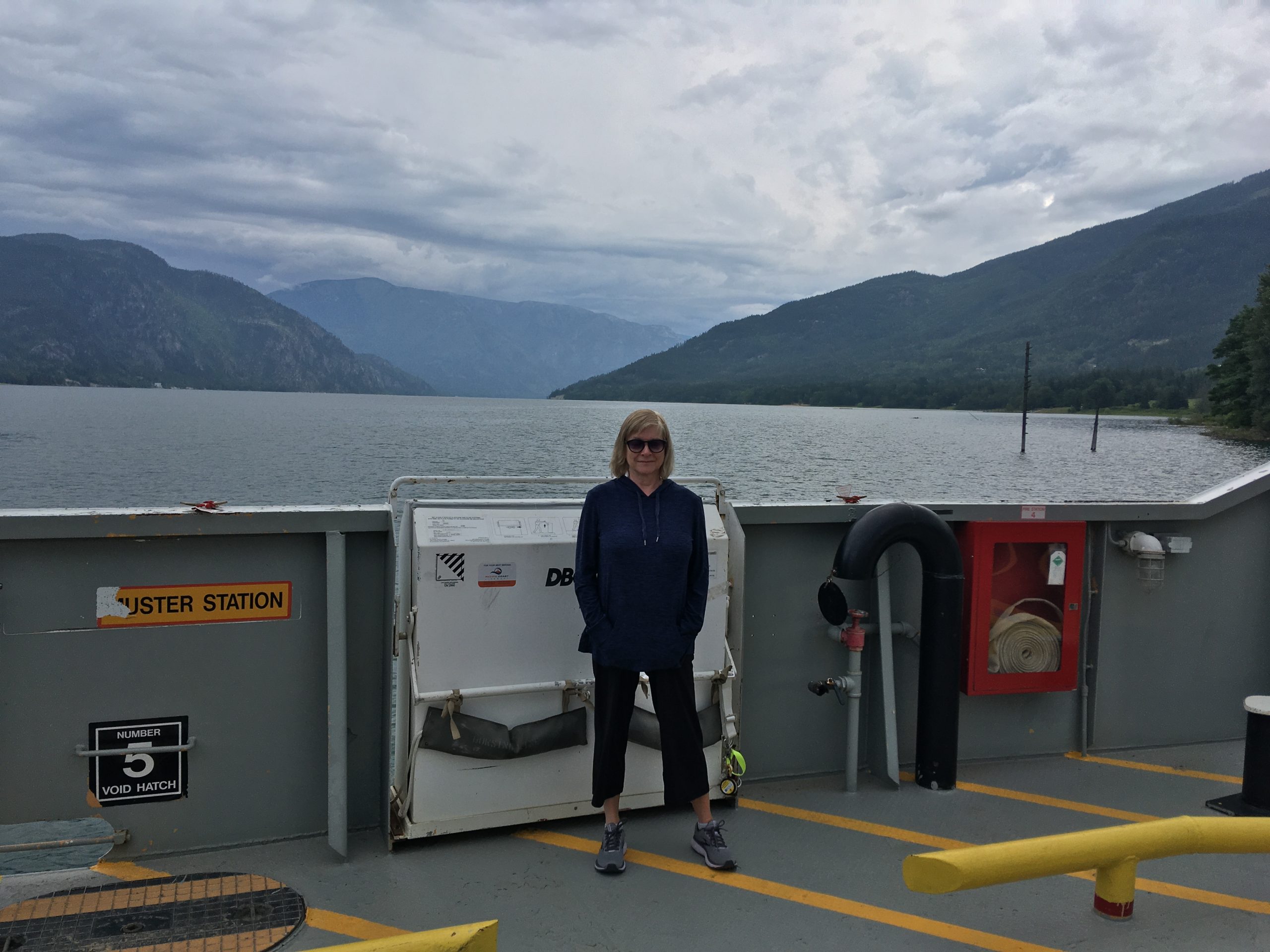
© All rights reserved. Unless otherwise indicated, all blog content copyright Eve Lazarus.


